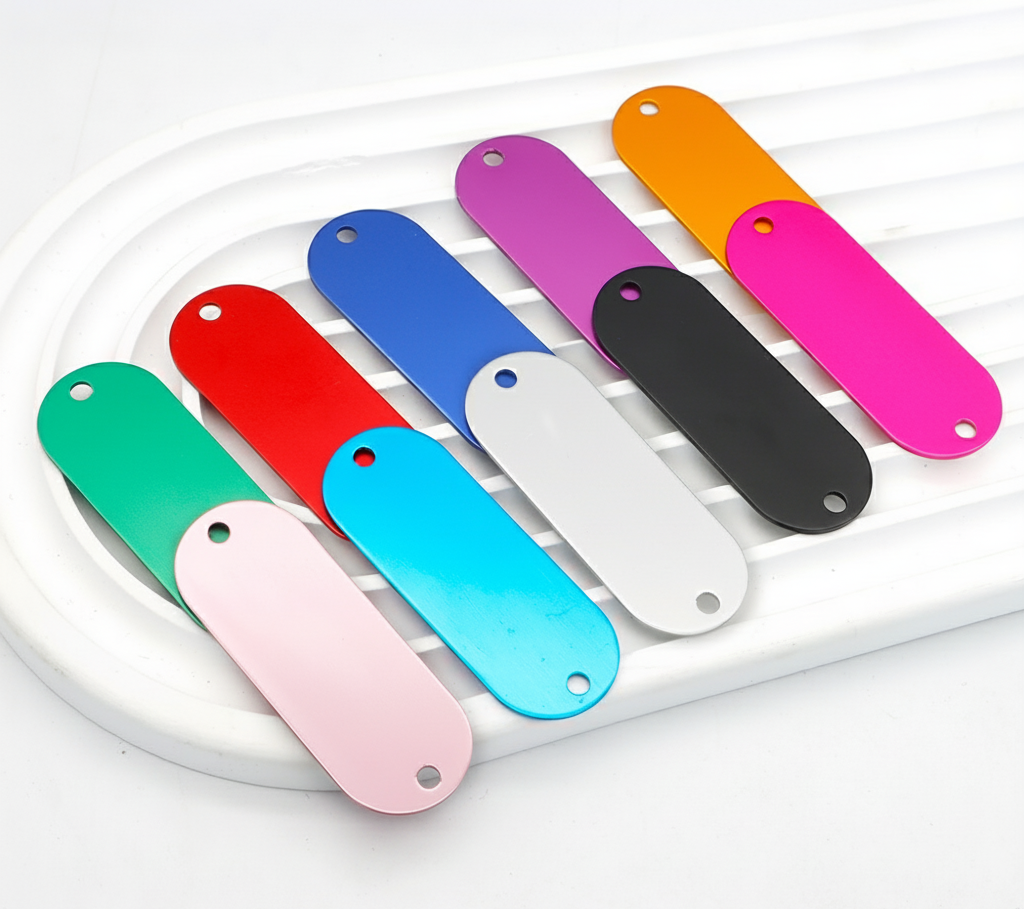In the world of pet accessories, dog tags play a crucial role. Not only do they serve as a fashionable statement, but they also ensure the safety and identification of your furry friend. When selecting the perfect dog tag, choosing the right material is paramount. Stainless steel and aluminum are two popular options, each with its own unique properties and benefits. But which one truly stands out?
In this comprehensive article, we will delve into the key characteristics of stainless steel and aluminum dog tags, examining their pros and cons to help you make an informed decision for your beloved pet. From durability to aesthetic appeal, and beyond, the choice of material can impact the longevity and functionality of your dog tag.
Table of Contents
ToggleIntroduction
Opening Context and Industry Relevance
Dog tags have become a staple for pet owners around the globe. Far from being just an accessory, they’re an essential piece of identification that can play a crucial role in the welfare of your pet. With the rise of pet customization trends, choosing the right material has become as important as deciding on the tag’s design or what information to include. But why does the material matter so much?
Dog tags are not just about style—they’re a vital component of pet safety. In a bustling world, tags help reunite lost pets with their owners. The material of the tag affects its durability, the clarity of engravings, and how comfortable it is for your pet to wear.
Summary of Core Insights
Understanding the properties of stainless steel and aluminum can guide your choice. Stainless steel shines in durability and resistance to wear, making it ideal for active pets. However, aluminum offers lightweight benefits and a variety of colors, appealing to style-conscious pet owners. This blog will explore these factors in detail so you can decide which metal is the perfect match.
Smooth Transition Leading into Full Content
As we dive deeper, we’ll evaluate these materials based on critical aspects like longevity, weight, aesthetics, cost, and user experiences. Whether you’re a pet owner seeking the best for your dog, or a retailer considering stocking options, this guide is crafted to provide the insights you need.
Stainless Steel vs. Aluminum: Comparative Table
| Feature | Stainless Steel | Aluminum |
|---|---|---|
| Durability | Highly durable, resistant to scratches and wear | Less durable, prone to scratches and dents |
| Weight | Heavier, may not be suitable for small pets | Lightweight, comfortable for all pet sizes |
| Corrosion Resistance | Excellent, does not rust | Good, resistant to rust |
| Aesthetic Options | Limited color options, but available in different finishes | Wide range of vibrant colors and custom shapes |
| Cost | Generally more expensive, long-term investment | More affordable, ideal for regular replacements |
| Engraving Quality | Crisp and clear engravings that last | Good for engravings, but may wear over time |
Stainless Steel Dog Tags
Durability and Strength
Stainless steel is renowned for its exceptional durability. This feature makes it a go-to choice for pet products that need to withstand rough use.
Core Insight: Stainless steel dog tags are nearly impervious to scratching and wear, ensuring longevity even for the most active pets.
- Resilience to Corrosion: Stainless steel doesn’t rust, which makes it ideal for pets that love water. Whether your dog enjoys beach days or rainy walks, you can trust this material to maintain its integrity.
- Heavy-Duty Usage: Compared to other materials, stainless steel can endure considerable force without bending or breaking, vital for active dogs that play rough.
- Maintaining Shine: Over time, stainless steel retains its polished look, a benefit appreciated by those who prioritize aesthetics.
Aesthetic Appeal
A polished stainless steel tag adds a timeless and elegant touch to your pet’s accessory collection.
- Versatile Finishes: Available in different finishes, from high polish to brushed matte, stainless steel caters to various style preferences without compromising quality.
- Custom Engravings: The hard surface supports precise engraving, ensuring that the information remains clear and legible over time.
Weight Considerations
Compared to aluminum, stainless steel is heavier, which may be a factor for small dog breeds.
Detail on Weight:
While stainless steel offers unparalleled durability, its weight may be a concern for owners of smaller pets. Consider the dog’s size when choosing between these materials.
Cost Efficiency
Although stainless steel tends to be more expensive than aluminum initially, its lasting durability often results in long-term savings.
Long-Term Investment:
The initial cost is offset by the need for fewer replacements, making stainless steel a cost-effective choice over time.
Real User Experiences
Many pet owners report high satisfaction with stainless steel tags due to their lasting beauty and durability despite their higher upfront cost.
- Testimonials cite minimal wear even after years of use.
Case Study:
Consider Max, an active Labrador whose adventures involve beaches, forests, and mud. His stainless steel tag has withstood it all, proving to be a trustworthy companion.
Aluminum Dog Tags
Lightweight Benefits
Aluminum’s lightweight properties make it an attractive choice for dog tags, particularly for smaller breeds.
Core Insight: Aluminum dog tags strike a balance between functional and decorative roles for many pet owners, providing comfort without the weight burden.
- Ease for Small Pets: The lighter weight is easier on smaller pets, preventing discomfort that heavier materials might cause.
- Comfort for Cats Too: Not just for dogs, aluminum tags are popular among cat owners for their lightweight nature.
Variety and Customization
Aluminum offers a broader range of colors and styles, making it a favorite for customization enthusiasts.
- Colorful Options: Available in a myriad of vibrant colors, aluminum tags add a splash of personality and can be coordinated with other pet accessories.
- Creative Designs: The softer metal allows for more detailed custom shapes and designs, providing endless possibilities for personal expression.
Durability and Wear
While aluminum is less durable than stainless steel, it still offers resistance to weather elements.
Detail on Longevity:
- Susceptibility to Scratches: Aluminum is softer and more prone to scratches and dings from everyday wear and tear.
- Corrosion Resistance: Despite its softer nature, aluminum holds up well against rust, ideal for everyday use and less aggressive environments.
Cost Considerations
Aluminum is generally a more affordable option, which is particularly appealing to pet owners looking for cost-effective solutions without sacrificing style.
Budget-Friendly Choice:
For those who enjoy changing styles frequently, aluminum offers a cost-effective way to do so without breaking the bank.
User Experiences
Pet owners who favor aluminum often highlight customization as a significant advantage, praising the lightweight nature and stylish options available.
- Feedback mentions frequent replacements due to wear, balanced by their low cost.
Case Study:
Bella, a dainty Chihuahua, thrives with an aluminum tag that matches her delicate charm and rotates with the seasons to showcase her vibrant personality.

Conclusion
Recap of Major Takeaways
Choosing between stainless steel and aluminum for your dog tag truly hinges on your specific needs and priorities. If durability and long-term investment are your focus, stainless steel may be the right choice. However, if you seek lightweight and customizable options, aluminum offers plenty of appeal.
Final Value Proposition and Call to Action
At the end of the day, the best dog tag is one that meets the lifestyle and personality of both the pet and the owner. Consider your priorities: longevity, aesthetics, and budget. Equip your pet with a tag that suits their adventures, ensuring safety and style.
For more information on our selection and expert advice on choosing the perfect tag, visit our website or contact us directly. Your furry friend’s ideal accessory awaits!

